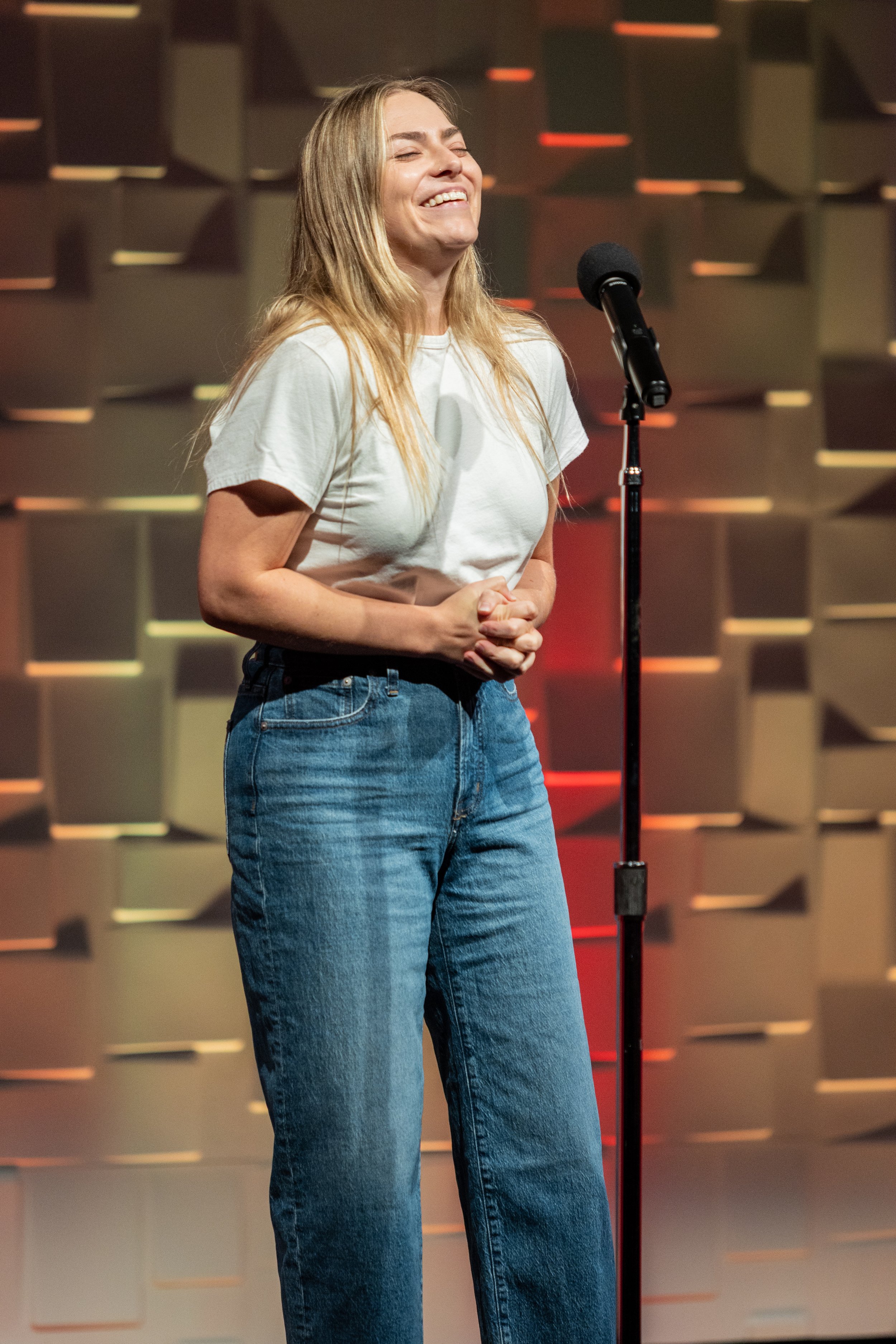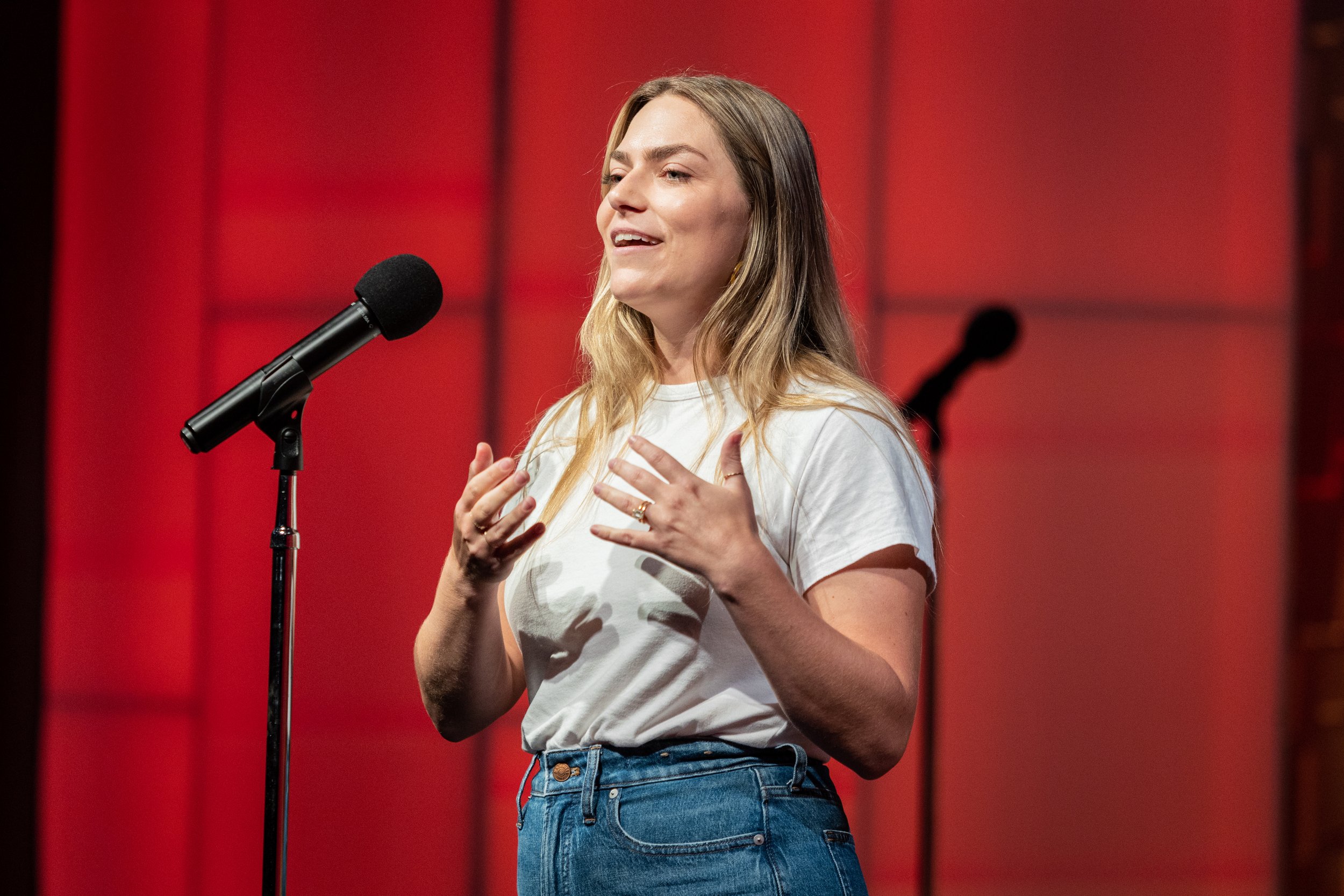We all know life isn’t perfect, but sometimes we get a do-over. In this week’s episode, both of our storytellers get a chance to redeem a part of their past.
Part 1: When Barbara Todd isn’t with her dad when he passes, she searches for forgiveness.
Barbara Todd started her American journey after relocating from British Columbia, Canada to California as a young RN over 30 years ago. The move was meant to be a one or two year adventure but after finding the love of her life, having two amazing children and continuing with an extremely rewarding career in healthcare - the adventure continues! Barb began her storytelling journey through listening to the many amazing podcasts celebrating true storytelling. She found a local live event hosted by Capital Storytelling in Sacramento and was hooked! After participating in in-person and virtual classes as well as open mic and curated events, Barb applied and was accepted to the Capital Storytelling Ambassadors program. Through this amazing opportunity, Barb has been bringing the power of true storytelling to her colleagues in healthcare ever since!
Part 2: Grad student Nina Christie’s preconceived notions of the Skid Row needle exchange get turned on their head when she begins volunteering there.
Dr. Nina Christie is a newly-minted Ph.D. from the University of Southern California and is currently postdoctoral fellow at the University of New Mexico at the Center for Alcohol, Substance Use, and Addictions. Her research focuses on the intersection of social connection and substance use, with an emphasis on harm reduction and drug policy. She is passionate about positively impacting human health and wellbeing through the lens of psychology, public health, and policy. She is also a ~lover~ of all things Taylor Swift, and she enjoys baking new recipes for her friends and family.
Episode Transcript
Part 1
When I was 10 years old, my family moved to a small town on Vancouver Island in the hopes of fulfilling my dad's dream of owning a house right on the ocean. My story begins three years later. I am 13 years old and I'm watching my dad look out our window at the ocean with his eyes full of tears whispering goodbye. Two years before this moment, he had been diagnosed with an aggressive form of cancer.
He became sick very quickly. he was only 37 years old. He wasn't able to work because he was so sick, so my mom had to work extremely long hours in order for us to not lose our home on the ocean. Because of that, my dad and I got to spend a lot of time together talking about his past, my future and how overwhelmingly sad we were that he was not going to be a part of it.
Barbara Todd shares her story at Verge Center for the Arts in Sacramento, CA at a show sponsored by Capital Storytelling in April 2023. Photo by Daniel Shambra.
It was becoming clear that my dad was going to die soon and my mom was terrified at the idea of him dying at home, but he did not want to leave the house. She'd asked the doctor to come to the house to help convince him that he should go to the hospital, that he would be more comfortable there in his final days. He reluctantly agreed and slowly said goodbye to everything, including the ocean that he loved so much.
The next 10 days were a blur. We lived pretty far from the hospital so my mom was only able to get us over there every other day or maybe even every three days. When we did go, it was just so hard to see my dad in that hospital bed just filled with a combination of anger, fear and sadness.
One day, my mom had picked me up at school and dropped me off at the hospital and then carried on back to work. I remember walking into the room and my dad had a cookie for me. His eyes brightened. He smiled as I came into the room. But as he handed me the cookie, his eyes filled with tears and he began to cry.
I took the cookie. I did not want to disappoint him. And I ate the cookie but I couldn't even taste it. I could hardly swallow it.
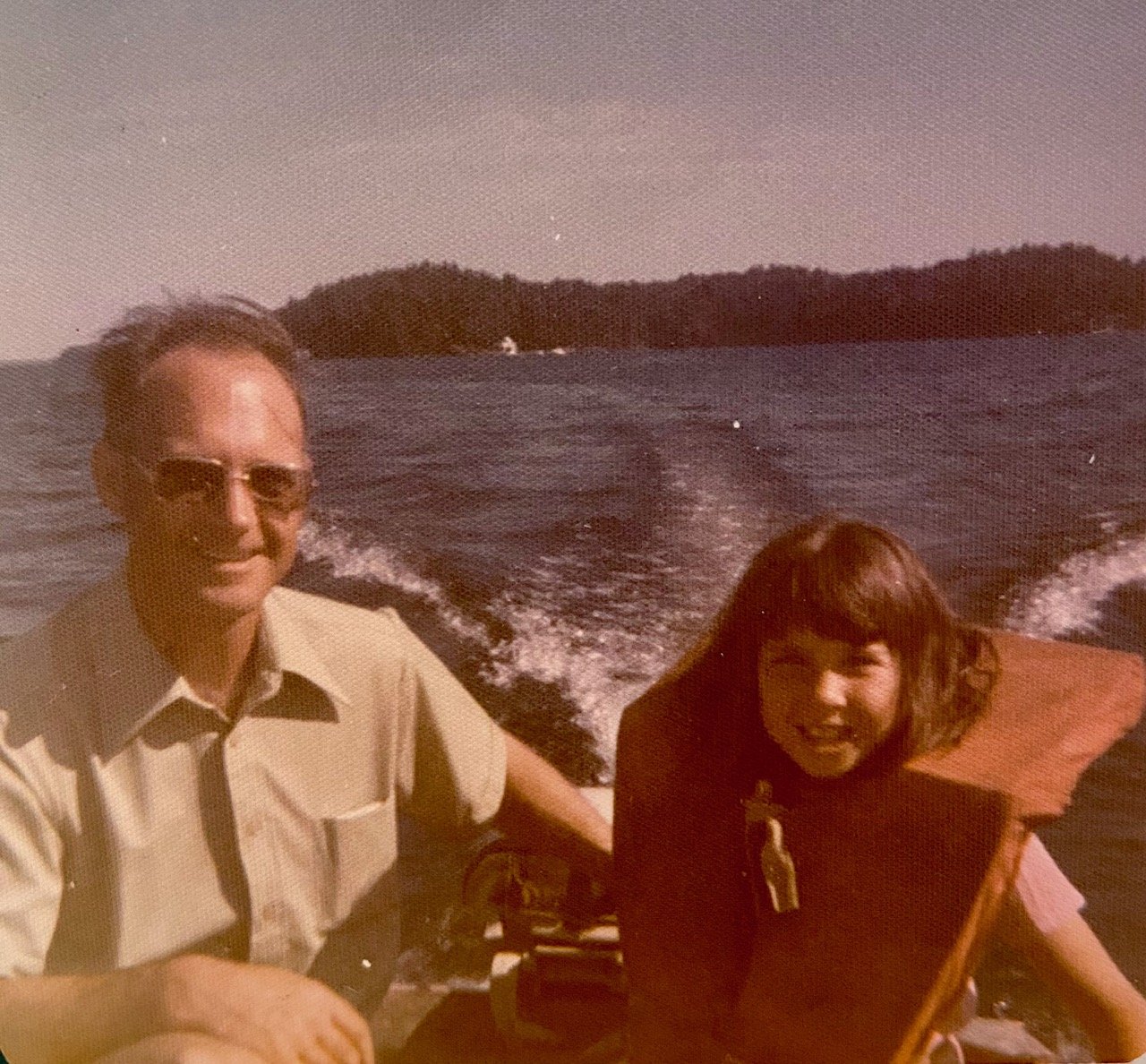
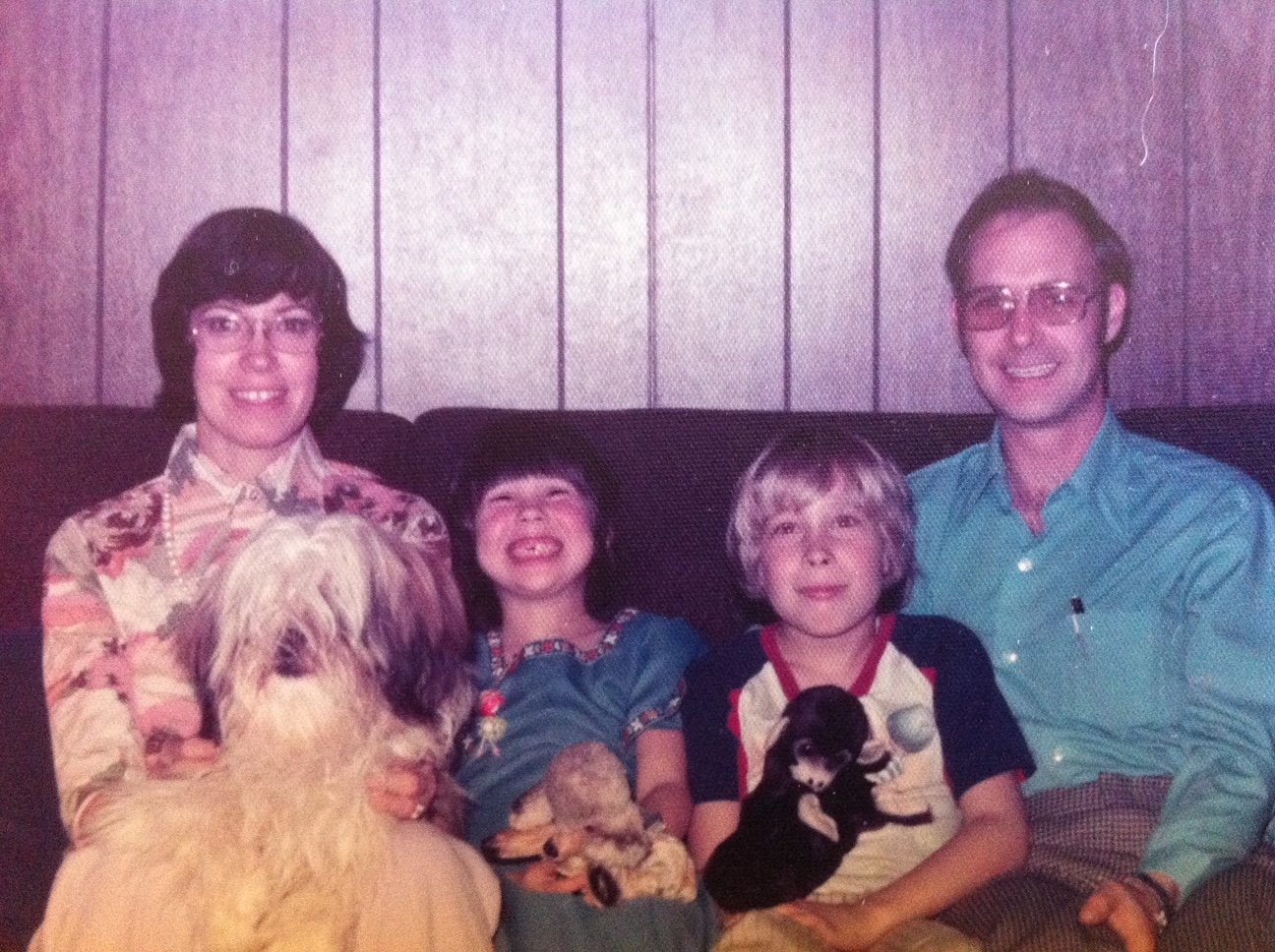
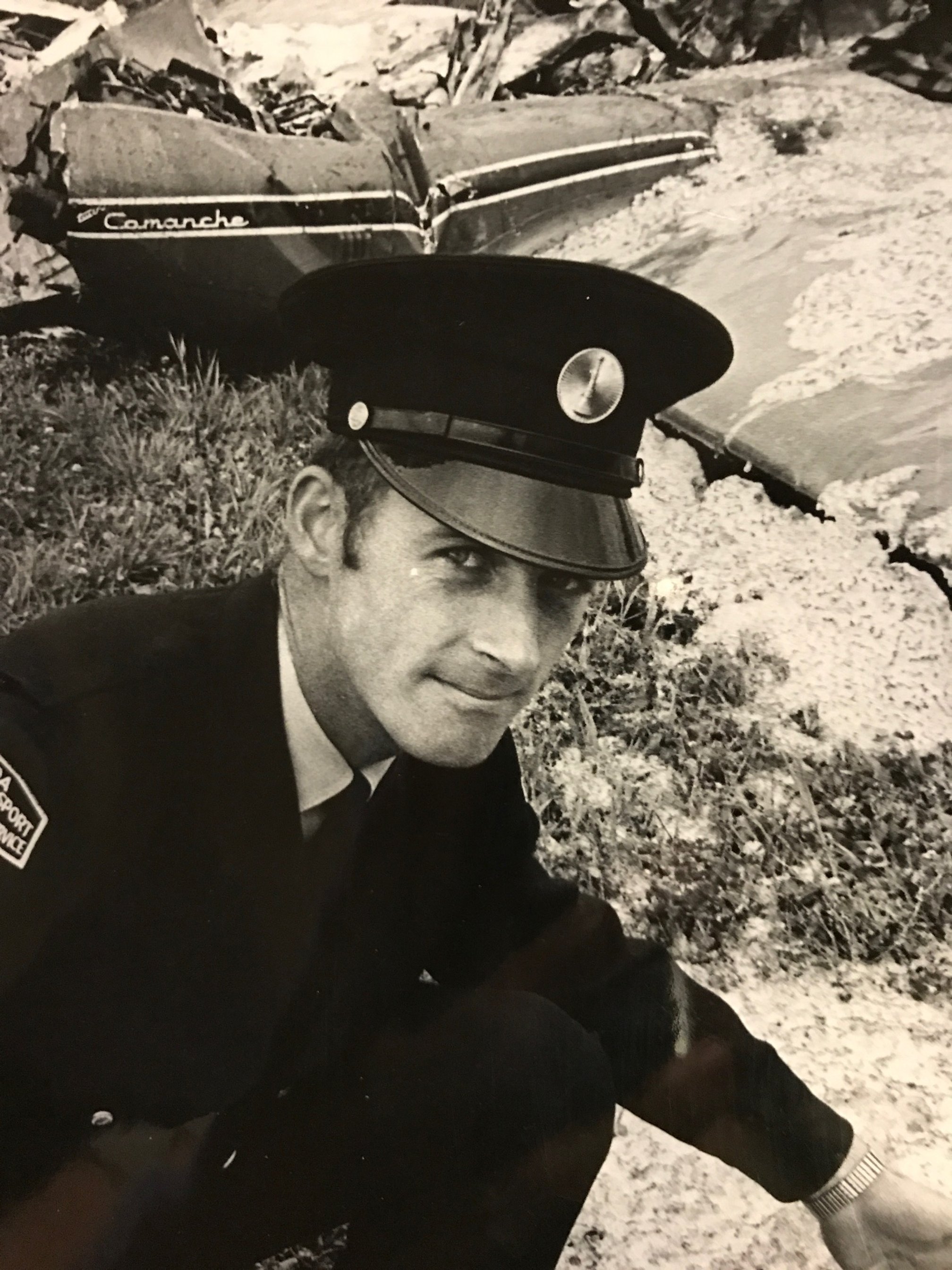
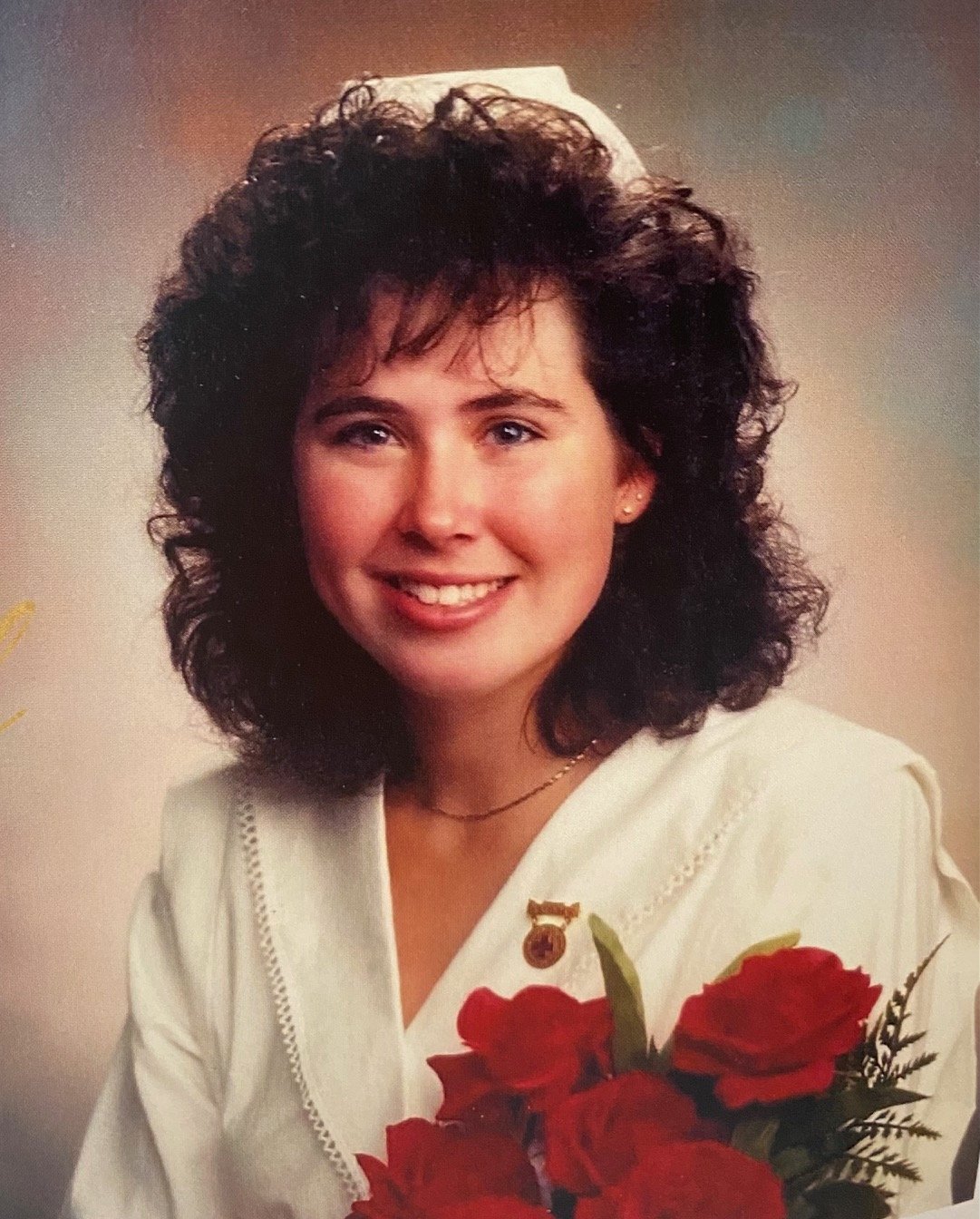
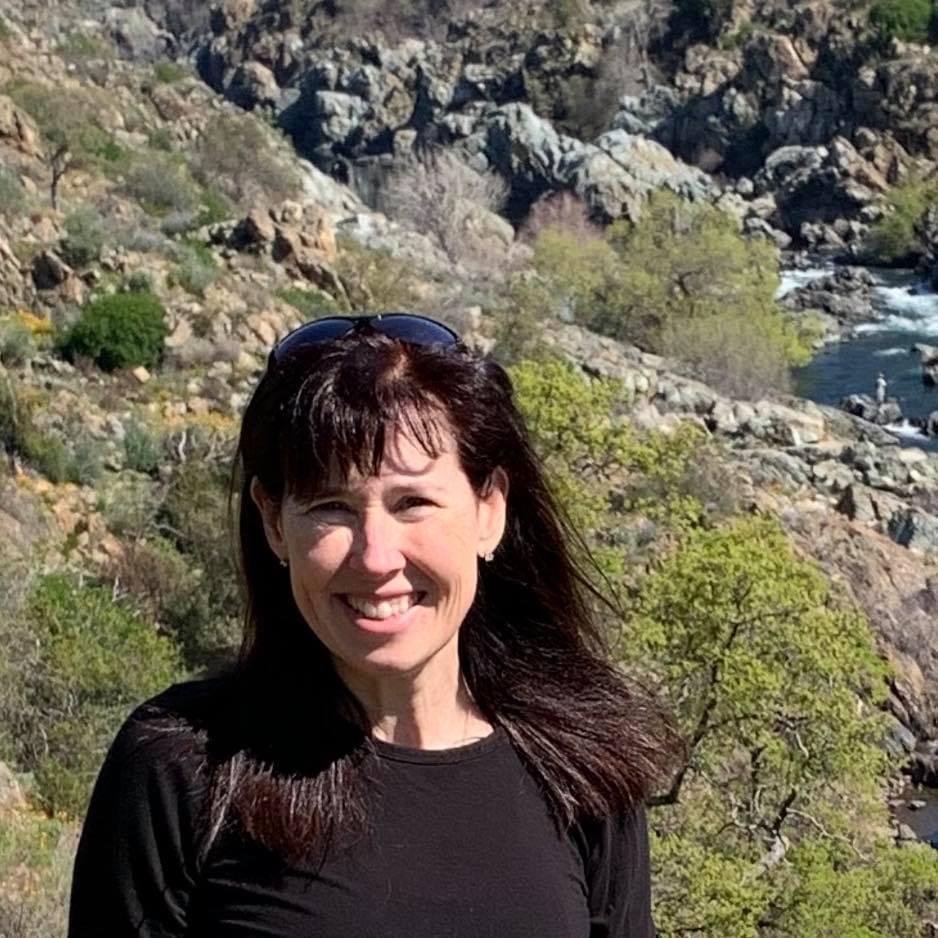
As we entered the second week, it had been a few days since we've been up to see him and my mom promised us that on Saturday we would spend the whole day with him and we'd take a picnic lunch and it was going to be great. Unfortunately, Friday night, late, we received a call that he'd taken a turn and we needed to come to the hospital right away.
I really couldn't believe my ears when I heard my mom say, “Is he asking for us?” And the nurse said, “Well, no. I think he's pretty much in a coma at this point.”
And my mom said, “Just let us know when he's gone.”
I was devastated. I immediately pictured my sad dad in that hospital bed alone. And I turned to my mom and I was going to say, “Mom, what are we doing,” but I could see just how completely overwhelmed she was, and so I stayed silent.
A few hours later, we got the call and he had passed. Every single night in my teen years, I talked to my dad. I would go to bed and I would tell him about my day and I would end by saying how sorry I was that he was alone. I just needed to know, I just wished to know somehow that he could forgive us, forgive me.
Also, during my teen years, I was trying to figure out what my next chapter was going to be. I was experimenting with different ideas for my career. I took some drama classes and thought about maybe being an actress. No, wasn't going to be me. But I thought about being a teacher and then I took this advanced first aid class and I was like, “Oh, my God, I'm kind of good at this.” I felt so powerful having actual tools to help people.
Then I thought, “Oh, my gosh, I need to be a nurse.” I was 15 years old. I'm like I'm applying to nursing school right now, and I did and I got accepted.
I started nursing school the September following high school graduation. This RN program was amazing. It was a hospital based diploma program and we lived in dorms right across the street from the hospital, basically on the hospital campus.
Our first year was a lot of bedmaking, vital sign taking, assessing, care plan writing, pretty straightforward stuff. But at the end of that first year, I was assigned a six week practicum on the palliative care unit.
This unit was filled with people who were at the end of their life and most of them were a lot older, but there was one very young patient, Jane. She became my primary patient. She was 36 years old and she had a very aggressive form of lung cancer. This cancer grew so quickly, the tumor actually burst through her skin.
Barbara Todd shares her story at Verge Center for the Arts in Sacramento, CA at a show sponsored by Capital Storytelling in April 2023. Photo by Daniel Shambra.
She just was so angry. She didn't want to believe that this was happening to her and her emotions were so familiar to me. It was this combination of anger, fear and sadness.
Jane had a 16 year old daughter. I was only 18 at the time but yet I felt so much older than her daughter. Over the next few weeks I really got to know Jane and her loving family. She had her sisters and her daughter coming to visit. Most days she would stay in bed and I would read to her or just do anything I could to help her feel comfortable.
Then one day I went into work and she looked brighter. And she said, “You know, I feel really good today. I think I'm gonna get up in the chair.”
And I said, “Yeah, let's do it.”
So, got her up into the chair, kind of getting her organized. And she said, “You know, I really wanna read a newspaper.”
So I was like, “Let me go get a paper. That's great.”
So I step out into the hallway and the phone's ringing at the nursing station. I answer it and it's her family and they're asking if they should come visit. And I said, “Yeah, today is actually a really good day. Jane's feeling good. She's up in the chair. Come on down.”
They said, “Great, we'll be right down.”
I walked down the hallway to the newspaper rack, got the newspaper and headed back to the room.
As I entered the doorway, Jane coughed, a loud cough and was looking down at her hand. I caught eyes with her and she looked terrified. I looked in her hand and there was a massive blood clot.
I yelled for help and quickly started moving Jane back into her bed as she began coughing up copious amounts of blood. The nurses ran into the room and brought the suction equipment and the basins and I just sat on the bed with Jane and held her hand. And between the coughing and the sputtering, she said, “Help me.” She looked terrified.
I said to her, “Jane, the other nurses are getting the doctor. I'm not going anywhere.”
We knew that we were not going to stop this. This was going to be the end, but she didn't know that.
And so I held her hand and I just suddenly had this overwhelming feeling that whatever was next for her was going to be okay, if she could just let go.
So I just looked at her with my most reassuring tone and I said, “Jane, you're gonna be okay.”
She looked back at me and closed her eyes and then she died. We all sat in silence for a few moments and then suddenly I remembered that her family is going to be here any minute.
Barbara Todd shares her story at Verge Center for the Arts in Sacramento, CA at a show sponsored by Capital Storytelling in April 2023. Photo by Daniel Shambra.
I turned to my preceptor nurse and said, “Her family's coming. They're gonna be here soon.”
She said, “Oh, my gosh. Get out to the nursing station. Stop them. You need to tell them what's happened. We're gonna stay in this room and we're gonna get her cleaned up and get ready for them to come.”
Like, oh, my God. I head out to the nursing station and I'm going to sit down and take a deep breath but I can't because there they are at the end of the hallway. They look happy. They're so excited to come see her. I start walking toward them and I can see that their faces are changing because they can see my face and I realize I've got to get this out. I've got to tell them.
So I just kind of blurted it out. I said, “I am so sorry. Something's happened and Jane has died.”
I watched their face change. We were all in shock. I mean, just a few moments before I was bringing her a newspaper and now she's gone.
They started to cry. They hugged each other and then they pulled me into their hug. We're all hugging and then suddenly her sister steps back and she says, “Oh, my gosh, were you with her when she died?”
And I said, “Yes. Yes, I was. I was holding her hand. I was with her the whole time.”
And she said, “Oh, my gosh. She was so scared. Thank you so much for not letting her be alone.”
Suddenly, the picture of my sad dad in that hospital bed, he was no longer alone. I now pictured him holding the hand of a nurse. In that moment, I was suddenly able to forgive myself.
Over the last 30 years, I've had the honor and privilege of being at the bedside with many people as they pass when their families can't be there. And each time, I feel even closer to my dad and I know that he’d be very proud of me.
Thank you.
Part 2
My name is Nina and I actually grew up not too far from here, over in the San Fernando Valley, kind of in this like post valley girl era, but I didn't really relate to the whole rich airhead kind of thing that was shown a lot in the media at that time. I didn't really feel like I could relate to Cher from Clueless. I didn't have a really cool magic closet or a killer fashion sense. Actually, when I was 13 years old, I went to a Halloween party as the only kid dressed up in costume. That was a really good time.
Nina Christie shares her story at Crawford Family Forum in Los Angeles, CA at a show sponsored by LAist in June 2023. Photo by Louis Felix for LAist.
But growing up, my mom would have all four of us kids. She had four of us in five years. You do the math on that. She's a brave woman. And she would have all four of us sit down at the dining table after school and we had to sit there until we were done with our homework. Like normal kids, my two older brothers and my little sister would rush to finish their homework as quickly as possible and immediately get up, point at me, start laughing and go, “Why do you care so much and why are you spending so much time on your homework?” Until I caved, finished it and then would go play with them.
I'm, as you can kind of tell from this, kind of like a goody two shoes kid growing up. I'm really grateful to my siblings, especially my brother Kanon who taught me that sometimes it's actually pretty fun to break the rules. So, four teenagers in a house, there was some rule breaking.
I tried to keep this on as I went into college and I tried to remember my brother's senior quote, which was, “Don't get caught.” So they were definitely rule breakers in the family. His senior quote was actually quite ironic because he definitely got caught on more than one occasion with weed both by parents, friends’ parents and even the police on one occasion. And so it was a wild time in high school.
But moving on to college, I was the first one to go “away” for school. So my brothers, my mom and even my sister all went to Cal State, Northridge or CSUN, and I went the whole 12 miles over the 405 to UCLA. I got to tell you, at the time, that 12 miles really did feel more like 12,000 because it just felt so far from everything I knew.
I kept these, the lessons I had learned about, okay, it's okay to have fun and break the rules every once in a while but I was definitely still a try hard at heart. So like any good try hard academic kid, after college I went to PhD school.
When I started at USC, I actually reached out to my mentor and advisor John Monterosso before I began the program and so he invited me to come to his class called Drugs, Behavior and Society. He invited me to come to this guest lecture which was being given by a woman from Homeless Healthcare LA which houses a needle exchange down in Skid Row.
Coming into this, I had never heard of needle exchanges or harm reduction before, or only a couple of times just like on the news but I had never really known what they were. I had all sorts of ideas about them. I thought they were stupid and I said, “What kind of idiot thought it was a good idea to give needles to people that use drugs? Have they heard of enabling? Could this even be legal? And what is going on right now?”
It took this guest lecture one hour and 20 minutes to completely change my mind. I realized that I was actually the idiot. I was the one that did not know anything about what these programs are or what they do. So I realized during that lecture that the people that work at these facilities, these frontline workers working at needle exchanges and other harm reduction places, these are the people that care so much about people who use drugs that they're willing to do anything to keep them alive and to keep them safe, even if that means breaking the rules or breaking some social norms every once in a while.
So immediately after the lecture, I realized I really want to be one of them. So I walked up to her and I said, “How can I get involved in this? What are you doing? This is amazing. I'm an idiot.”
And so she told me, she's like, “You can volunteer here,” and I said great.
Nina Christie shares her story at Crawford Family Forum in Los Angeles, CA at a show sponsored by LAist in June 2023. Photo by Louis Felix for LAist.
So starting that Saturday and every Saturday for months and months, I would drive down to Skid Row in my ’92 Explorer, never been more grateful to have an incognito basic car than when driving down and parking in Skid Row every week. I would drive down there and I'd walk into the needle exchange and I would be a volunteer there for hours.
For those of you that have never been to one of these facilities, they're very welcoming spaces. I assume many of you have been to a froyo shop in your life. It's very similar, the setup, to that.
So you walk into froyo shop, your Menchie's, whatever, you see this bright colored counter, you see somebody behind the glass with their tongs and stuff. They have these metal bins full of like chocolate chips, you have your fruit, your cereal, your whatever. And at the needle exchange, they literally had a froyo counter. It was lime green with the same metal bins but, instead, inside what they had was sterile water, cotton balls, tourniquets and needles. All of these supplies are necessary for people to inject drugs to do so more safely, so it reduces the risk of hepatitis, HIV, the risk of infection or other issues that can arise from injecting drugs.
As I was working there and also going to classes at USC, I started to realize that I wanted my research to be about this population, to work with the population of people who inject drugs, people who are overlooked, even, more often, misunderstood.
So when it was finally time for me to start my very first independent research project, I was like what better place to do it than right here at the needle exchange at Homeless Healthcare LA.
So, I started working with my participants. Part of my project was to do interviews. So I'd interview my participants every two weeks for six months. We got very close. And I asked them many, many questions, all sorts of things. I'd ask them about their life, their employment, what was going on.
One question in particular I asked them was, “What's your relationship like with your friends? What do your relationships look like in the world?” And every single participant said they didn't have friends. They said, “I have people I use with. I have people here at the center that I care about that I know care about me, but I don't have any person in my life that I would call a friend.”
I thought to myself, “Okay, that's obviously a problem and sad, and also very rare in science.” You never get 100% of anything, granted I had 10 participants, not a huge pool. But 100% of anything is extremely rare and even a little suspicious, so I was concerned.
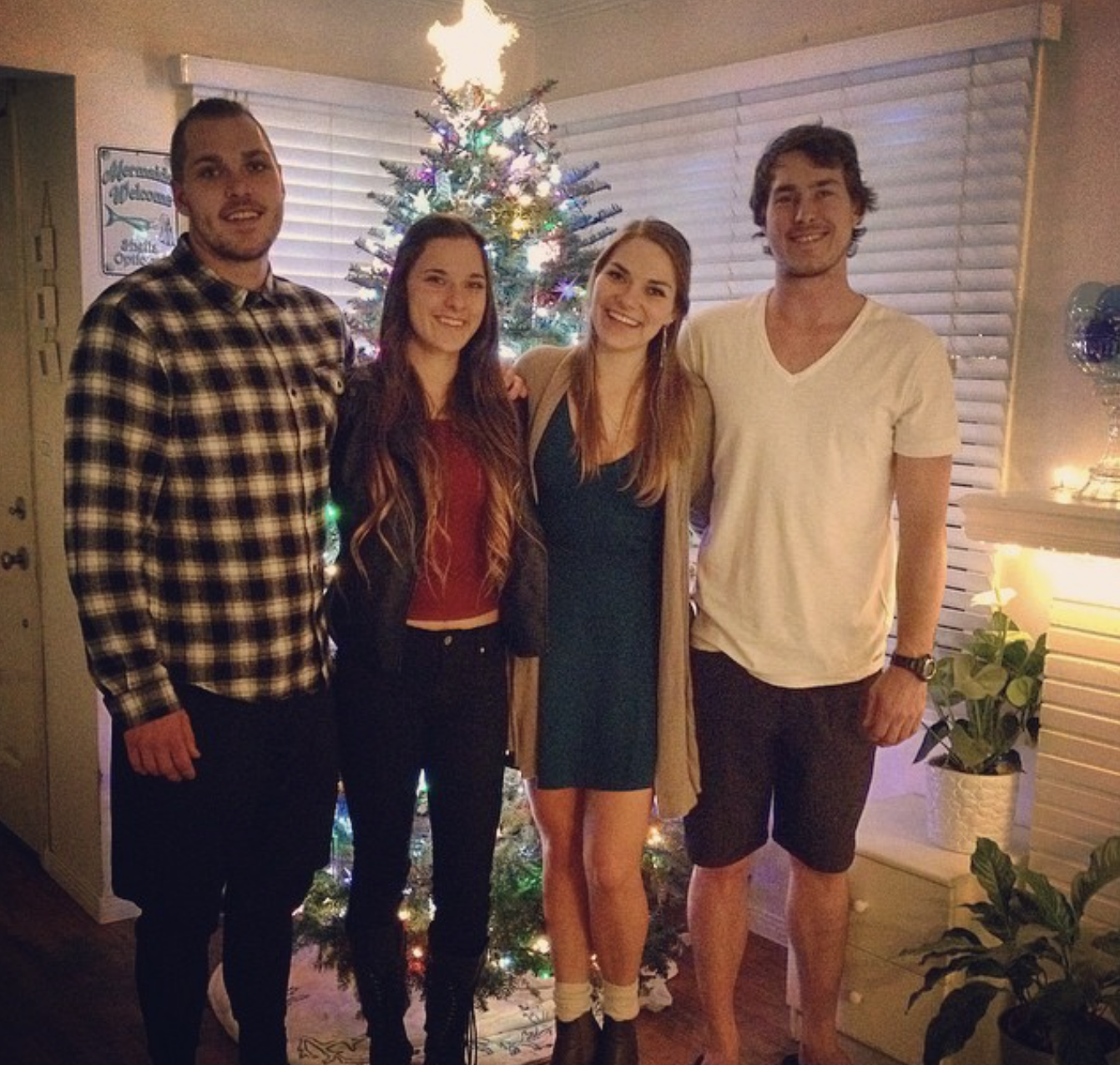

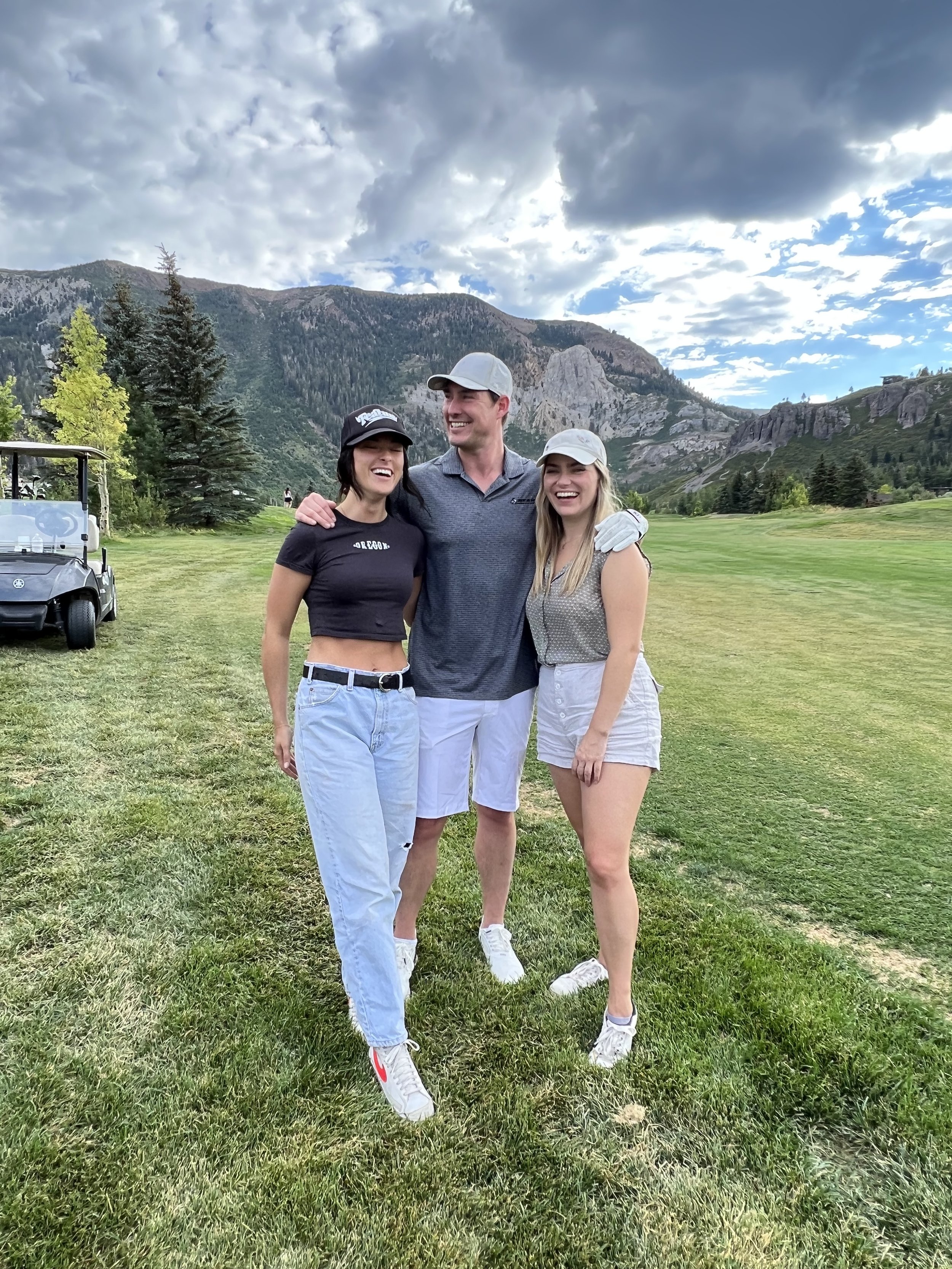
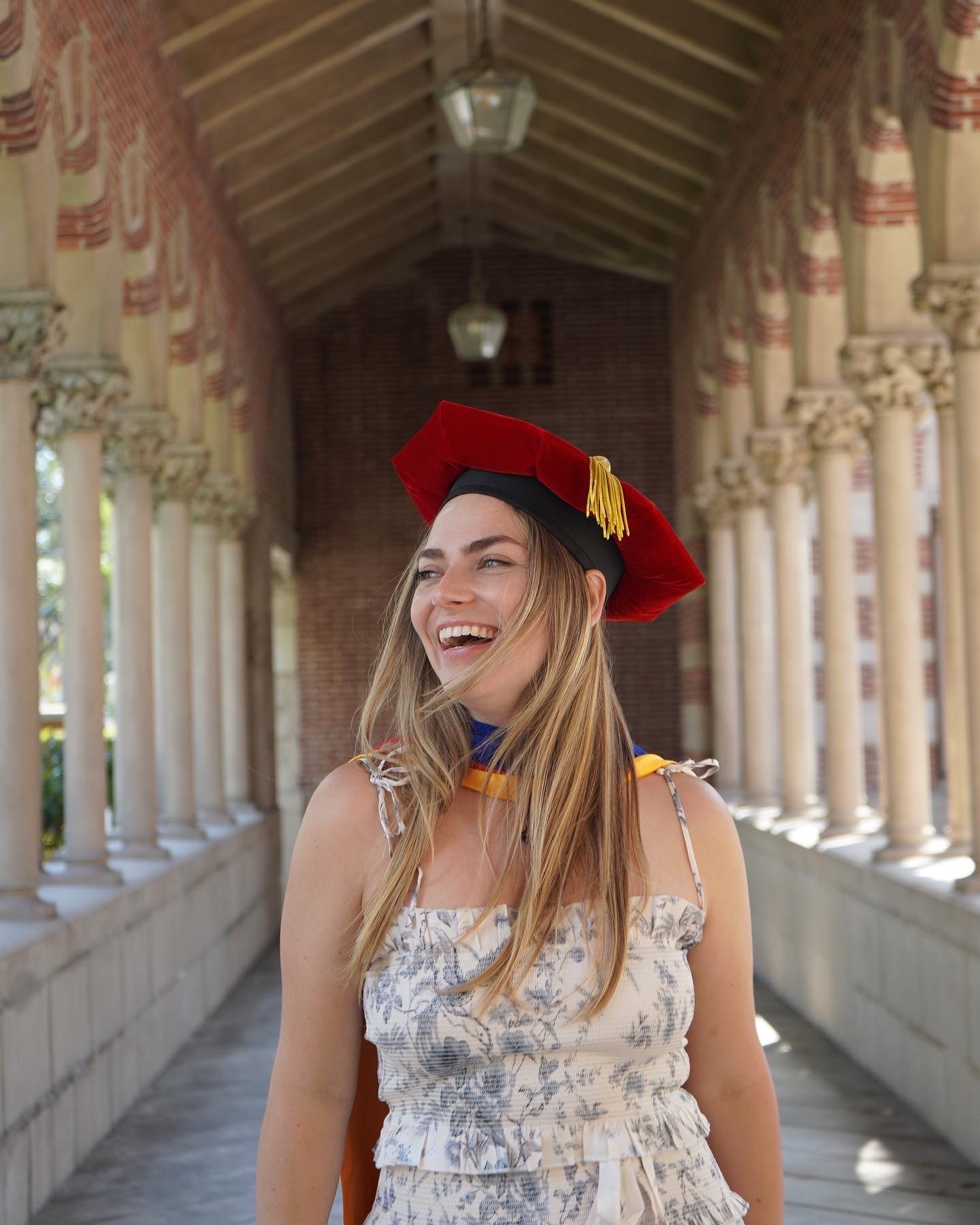
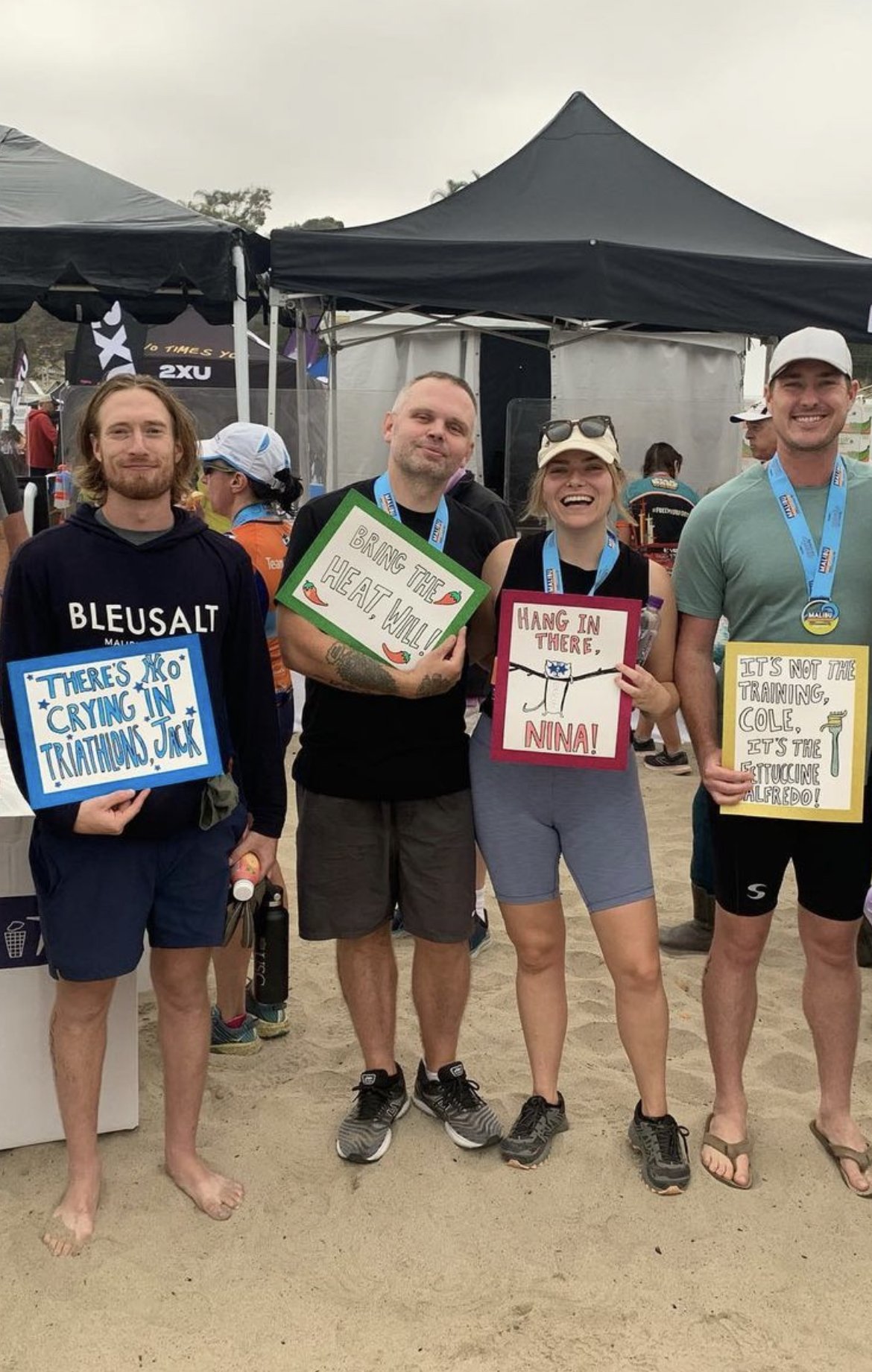

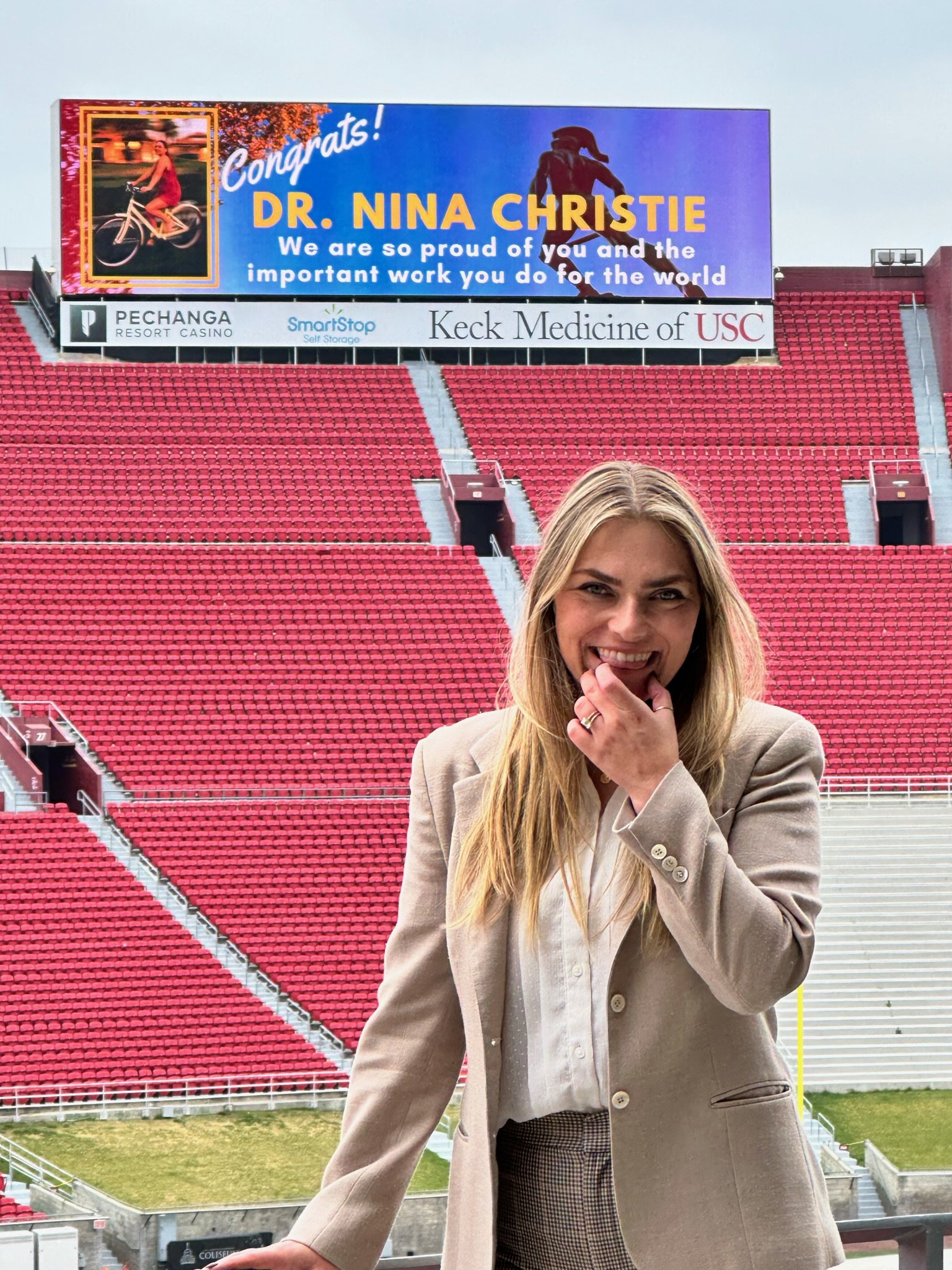
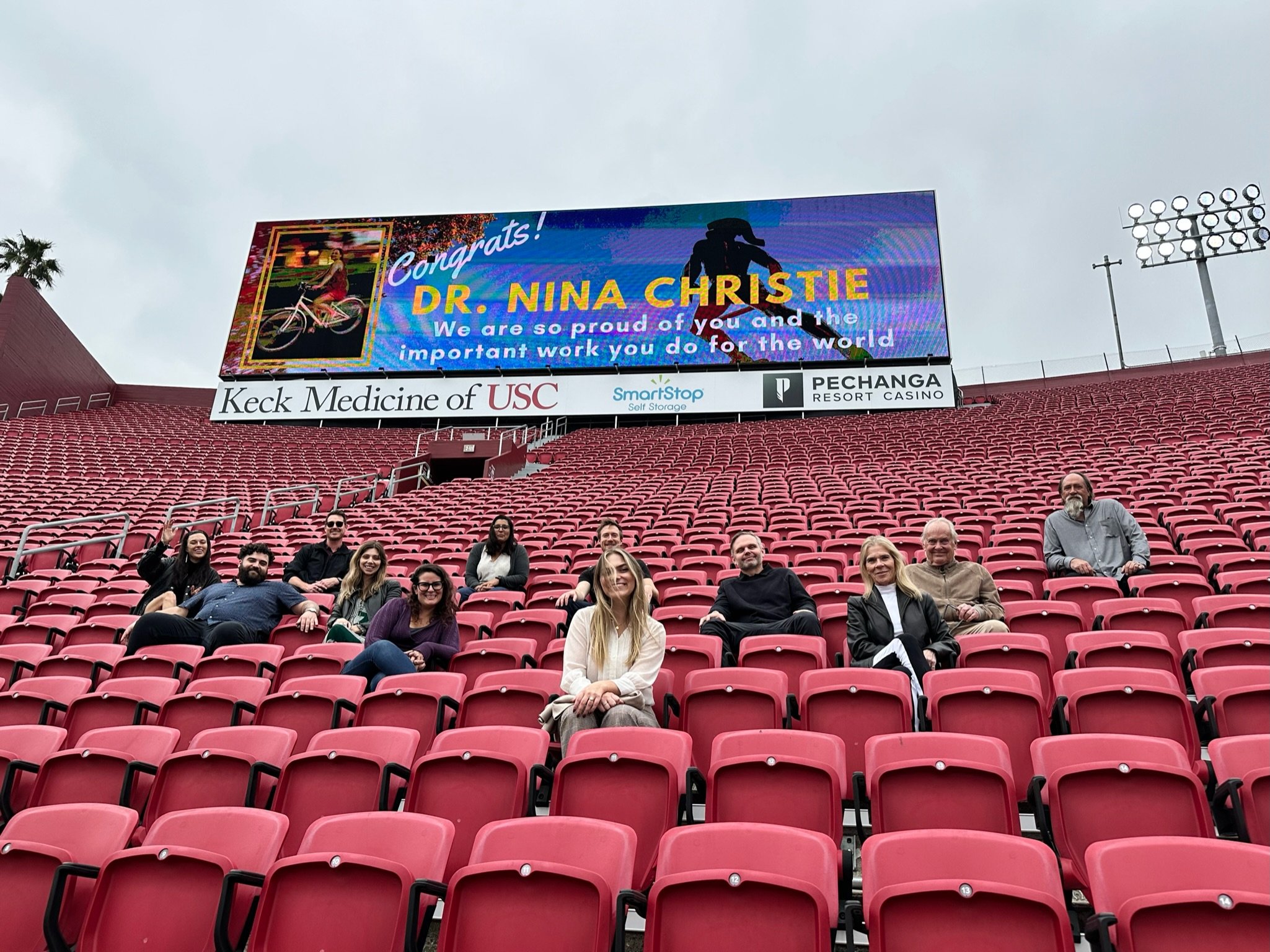
But it was around this same time that I heard of a neuropsychology theory called the Brain Opioid Theory of Social Attachment. That is a lot of words. Basically, what it means is that the opioid system, and this is opioids whether you're injecting them, things like heroin or fentanyl, or whether they're the opioids your brain is producing, things like endorphins, these opioids are critical for social connections and relationships.
Many people have often heard of oxytocin as the love hormone, this kind of like bonding chemical. These researchers in this theory argue that opioids are actually more important for social bonding than oxytocin.
So it was around this same time also that I was kind of coming into my own in grad school. So my advisor John, rather than inviting an outside expert to come give his lecture on harm reduction, he would have me come give the guest lecture, which was very exciting as a grad student.
It was really interesting because when he introduced me to his class, to his students, he said, “This is my PhD student. This is Nina. She is a scientist and an advocate.”
And I thought, “What an interesting combination.” That is a pairing that is often frowned upon in academia and in The Sciences, specifically by people who value objectivity above everything else. You shouldn't bring advocacy into your work.
It was at this time that I was mulling over everything going on at the needle exchange, the interviews I was having, trying to bring in this neuropsychology theory into all my work that I realized that I wanted my work to be scientifically rigorous and also socially impactful. It was really important to me that my work actually had deeper meaning beyond the walls of academia.
And so it was at that point that I was kind of like putting all of this together. I was doing my qualitative exams, which is like a stepping stone to your dissertation to finish your PhD. All of this work culminated for me last month actually when I defended my dissertation, which was on social connection and substance use.
The long story short of the findings of the dissertation, I want you all to think about this kind of like warm, fuzzy, nice feeling you get when you're hanging out with your friends or other people you love, that kind of like jovial spirit you feel. It's a nice feeling. It turns out that drugs and particularly opioids are very, very good at replicating that feeling even on the neural level. It's even this kind of experience when you're using opioids in particular has been dubbed the ‘heroin hug’.
So this is a pretty common experience among people who use drugs and also among the society at large when we feel these feelings when we're around people we love. It was really special for me to be able to defend my dissertation because my whole family and my friends and everyone that had supported me through the hours of data collection, analysis, breakdowns, literature reviews, all the fun things that go into a dissertation, they were all in that room with me and I got to explain to them what the heck I've been working on for six years because I do not think anyone in my family could have described it to you before that. It was very funny to watch them try at Thanksgiving.
It was also a little bit unusual. It's not typical to have your whole family there present for a dissertation, but we're very close and no one ever threatened us with being conventional. So it was really special to be able to do that.
They had actually planned this whole day of celebration for after the dissertation defense. They're like, “All right, we got a doctor in the family. We gotta do something big.” And so I followed them across the street from USC to Exposition Park. There's this beautiful rose garden. I was like, “Awesome. We're gonna hang out in here, take pictures.”
When we got there, I was like stopping to hang out and take pictures and everyone was like, “Oh, let's keep going.” I was like, “Where? Why? Where are we going?”
So they were like, “Let's go see the Coliseum. You can like really soak in your time at USC and feel like a Trojan.”
I was like, “Okay. I can't argue with that.”
So even though I was wearing these boots that were absolutely not made for walking, I followed them the many, many more steps to the Coliseum. These sneaky little celebrators, they had set up a whole private guided tour of the Coliseum that was empty, so it was really cool to just walk around and everything was like giant and felt bigger than life.
We walked down all the way to the football field where I look up and I see my new name Dr. Nina on the jumbotrons in the Coliseum. I was shocked. First of all, I did not know that was something you could do. You can't just ask USC Coliseum to put your picture and name up there. That's wild. But they did. They figured out how to. I still don't even know how they figured that out.
And so we're on the field and it was just so beautiful. I was thinking to myself, I was like, “Wow, these people in a matter of four hours managed to prove what I spent six years in my dissertation trying to study,” which is the role of social connections in our health and our well being. I realized I was like social connections and relationships are everything. Humans are built to be social creatures. We're meant to be in groups. It was just really great to be there that day.
As I stood there on the field with my name behind me on the Jumbotron, I was thinking of the life I've built here in LA the past 28 years, of all the people I love who are standing right there by me and all the people who I love and have also lost who are only there in spirit.
Nina Christie shares her story at Crawford Family Forum in Los Angeles, CA at a show sponsored by LAist in June 2023. Photo by Louis Felix for LAist.
We were standing there. We're trying to take pictures and so we were going to get a family picture. I had my mom and dad on one side, my brother Cole and my sister Serena on the other, and there's this unmistakable pause when we take family photos. There's this like moment of uncertainty as everyone's lining up to take their places.
In all of the work that I do, I really do it to understand and to support people who inject drugs. This includes people like my brother Kanon, who I told you about in the beginning, who we lost when I was a junior in college to an overdose. And so as I was standing there, I was thinking about all of these things and all these people and all these great moments in our lives and I was thinking how great it is that he taught me that sometimes when you're doing the right thing, you have to break the rules. Harm reduction and needle exchanges and, in the future, overdose prevention, these are all led by rule breakers who are trying to make the world a little bit better and a little bit safer.
And so, may we all learn to break the rules in our own way at the right time, especially when lives are on the line. Thank you.



